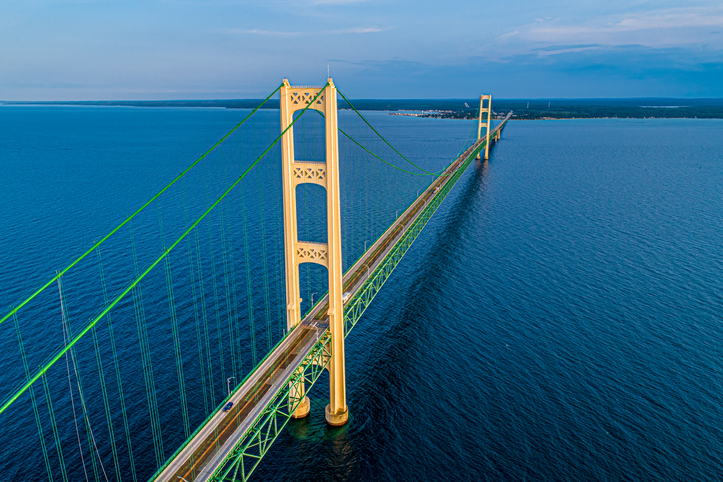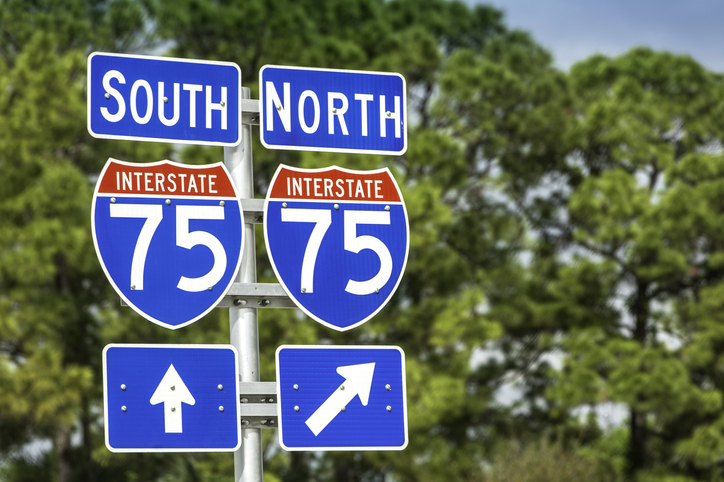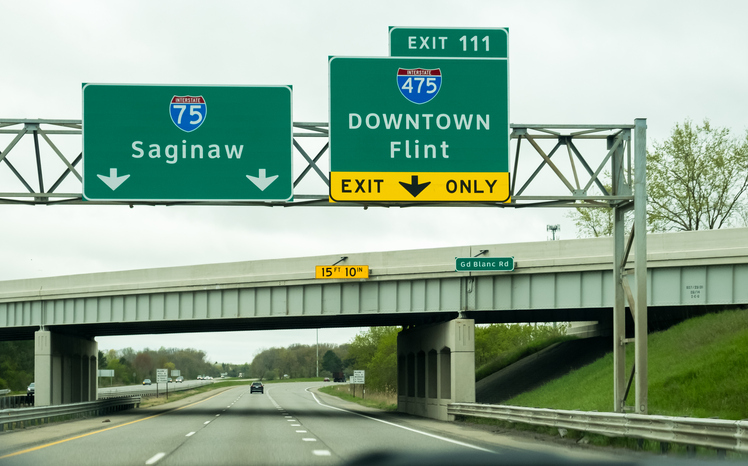Gordie Howe Bridge: New Drone Footage & Updates
The Gordie Howe International Bridge is getting closer to completion. Towards the end of August, the tower on the U.S. side of the Detroit River reached its full height of 722 feet, making it the second tallest structure in Detroit. Currently, officials from the Windsor-Detroit Bridge Authority report that the tower on the Canadian side is making good progress.
Significant progress is also being made on the towers, with the bridge deck at approximately 50% completion. Recent drone footage shared by officials shows the developments on the Michigan interchange. Traffic is flowing on I-75, and the footage shows the construction of ramps leading to and from the U.S. port of entry.
Recent drone footage shared.
Drone footage from the previous Friday displays substantial progress on the bridge deck, which extends about a quarter of the way across the river from each side.
According to the CBC, the Gordie Howe Bridge officials are maintaining their goal of opening the international crossing between Windsor and Detroit by late 2024.
With recent and upcoming achievements in the Gordie Howe International Bridge project, the Windsor-Detroit Bridge Authority (WDBA) and Bridging North America (BNA) plan to show their appreciation to the community for their support and patience during the five years of construction. They will host two community appreciation breakfasts. The first event will take place on Saturday, October 21, 2023, at Clark Park in Detroit, and the second will be on Saturday, November 4, 2023, at the Sandwich Teen Action Group in Windsor. Both events will feature entertainment, family-friendly activities, and free breakfast for up to 500 participants.
“We are excited to share that the US tower has reached its final height and the Canadian tower is nearing completion,” stated Charl van Niekerk, Chief Executive Officer, Windsor-Detroit Bridge Authority. “These majestic towers have been the most visible and inspiring signs of progress, representing a major step forward in construction of the Gordie Howe International Bridge.”
Michigan: Our 1 Mile Freeway + More Fun Facts About Our Roads
There are some strange and peculiar roads around the world which can often make driving an… interesting experience. While many roads are bland, Michigan has some unique roads. And many of those roads have some interesting history.
According to the U.S. Department of Transportation Federal Highway Administration, the oldest constructed roads discovered to date are in former Mesopotamia, now known as Iraq. These stone-paved streets date back to about 4000 B.C. in the Mesopotamia cities of Ur and Babylon.
Here in Amercia, the State Highway Department was created in 1905. In the early 1900s, lcoal leaders, including Horatio S. “Good Roads” Earle and Frank F. Rogers, saw a pressing need to get Michigan out of the mud.
Over time, they accomplished the first mile of concrete highway built, first painted centerline, first roadside park, and the first four-way red/yellow/green electric traffic light built on a solid foundation for a sustainable transportation system in Michigan. The demand for paved roads rose with the use of wheeled vehicles.
When it comes to Michigan’s roads and highways, there are many facts. Most Michiganders would find some of these quite surprising. The Michigan Department of Transportation has compiled a list of facts about the roads and highways in Michigan. With facts about Michigan’s first road map, first four lane road, and others. But which facts do some Michiganders not know about?
Here are 8 Michigan road facts you probably didn’t know about.
Kayla is the midday host on Detroit’s 105.1 The Bounce. She started her career in radio back in 2016 as an intern at another Detroit station and worked her way here. She's made stops in Knoxville, TN, Omaha, Ne and other places before returning to Detroit. She’s done almost everything in radio from promotions to web, creating content on social media, you name it.
She’s a true Michigander, born and raised. So, you can catch her camping or vacationing up north to exploring the downtown Detroit or maybe even catching a sports game. During her free time, Kayla enjoys watching movies, roller-skating, crafting, and music festivals. She and her husband together dip into many of the great things Michigan has to offer. Together they also like to travel.
A few hobbies of hers include wine and beer tastings, crafting, hiking, roller skating, movies, home improvement projects, gardening, and festivals. She’s always looking to take on more local events happening in the community.
She loves connecting with the community. When writing, Kayla covers topics including lifestyle, pop culture, trending stories, hacks, and urban culture.








